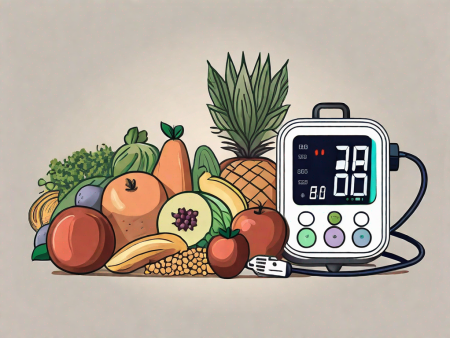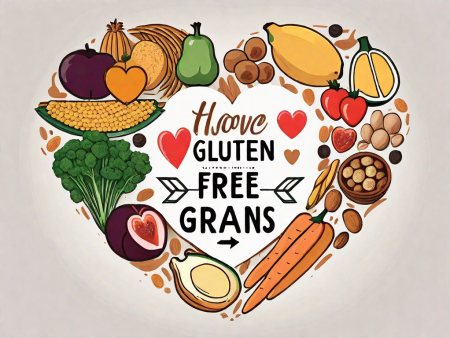Discover 7 effective lifestyle changes to reduce joint pain flare-ups and improve your overall well-being.
7 Lifestyle Changes to Reduce Joint Pain Flare-Ups
Do you often find yourself dreading the flare-ups of joint pain? Well, fret no more! In this article, we will dive into the world of joint pain and explore seven lifestyle changes that can help you reduce those pesky flare-ups. So, let’s get started!

Understanding Joint Pain and Flare-Ups
Before we dive into the lifestyle changes, it’s important to understand what joint pain and flare-ups are all about. Joint pain occurs when our joints become inflamed, leading to discomfort and reduced mobility. Flare-ups, on the other hand, are sudden episodes of increased pain and stiffness in our joints. Now that we have a basic understanding, let’s dig deeper into the science behind joint pain.
The Science Behind Joint Pain
Joint pain occurs when the cartilage, the protective tissue covering our joints, starts to wear down. This can happen due to various factors such as aging, injury, or underlying health conditions. When the cartilage deteriorates, the bones may rub against each other, causing pain and inflammation.
Cartilage is a remarkable tissue that acts as a cushion between our bones, absorbing shock and preventing friction. It is made up of specialized cells called chondrocytes, which produce a gel-like substance called matrix. This matrix is composed of collagen, proteoglycans, and water, giving cartilage its unique properties.
As we age, the production of collagen and proteoglycans in our cartilage decreases, making it more susceptible to damage. Additionally, injuries or repetitive stress on the joints can accelerate the breakdown of cartilage. When the cartilage wears down, the bones lose their protective layer, leading to bone-on-bone contact and the development of joint pain.
Moreover, inflammation plays a significant role in joint pain. When the cartilage is damaged, the body’s immune system responds by releasing inflammatory chemicals, such as cytokines and prostaglandins. These chemicals cause the blood vessels in the joint to dilate, leading to swelling, redness, and pain.
To prevent or manage joint pain, it’s essential to identify the common triggers of flare-ups.
Common Triggers of Flare-Ups
Flare-ups can be triggered by a multitude of factors, including weather changes, physical exertion, stress, and even certain foods. It’s essential to pay attention to these triggers and make conscious changes in our lifestyle to reduce the frequency and severity of flare-ups.
Weather changes, particularly cold and damp conditions, can exacerbate joint pain. The drop in barometric pressure and temperature can affect the fluid in our joints, making them stiffer and more painful. On the other hand, warm and dry weather can provide relief for some individuals.
Physical exertion, especially high-impact activities or repetitive motions, can put stress on our joints and lead to flare-ups. It’s crucial to find a balance between staying active and avoiding activities that strain the joints. Low-impact exercises, such as swimming or cycling, can help maintain joint health without causing excessive strain.
Stress is another trigger that can worsen joint pain. When we are stressed, our body releases stress hormones, such as cortisol, which can increase inflammation and pain sensitivity. Finding effective stress management techniques, such as meditation or yoga, can help reduce the impact of stress on our joints.
Surprisingly, certain foods can also contribute to joint pain flare-ups. Some individuals may be sensitive to foods high in purines, such as red meat, seafood, and alcohol, which can increase the production of uric acid and lead to gout attacks. Others may experience inflammation from consuming processed foods, sugary snacks, or foods high in saturated fats. Identifying and avoiding these trigger foods can help alleviate joint pain.
By understanding the science behind joint pain and identifying the common triggers of flare-ups, we can make informed decisions about our lifestyle and take proactive steps to manage and reduce joint pain.
The Role of Lifestyle in Managing Joint Pain
Now that we understand the basics, let’s talk about how our lifestyle choices can significantly impact joint pain and flare-ups. Making positive changes can go a long way in managing joint pain and improving overall joint health. So, let’s explore the connection between lifestyle and joint pain.
How Lifestyle Affects Joint Health
Our lifestyle choices play a crucial role in maintaining joint health. Regular exercise, a balanced diet, and stress management techniques can all contribute to better joint health. Engaging in physical activity helps to strengthen the muscles around the joints, providing them with the support they need. Additionally, a diet rich in nutrients, such as omega-3 fatty acids and antioxidants, can help reduce inflammation in the joints. Stress management techniques, such as meditation and yoga, can also alleviate joint pain by promoting relaxation and reducing tension in the body.
Conversely, a sedentary lifestyle can have detrimental effects on joint health. When we lead a predominantly inactive lifestyle, our joints are not being used to their full potential, leading to stiffness and decreased flexibility. Poor dietary choices, such as consuming excessive amounts of processed foods and sugary drinks, can contribute to weight gain and inflammation, both of which can exacerbate joint pain. Furthermore, high-stress levels can trigger the release of stress hormones, which can increase inflammation in the body and worsen joint pain.
The Connection Between Lifestyle and Flare-Ups
Surprisingly, the choices we make in our daily lives can directly impact the frequency and intensity of joint pain flare-ups. By understanding this connection, we can make informed decisions that lead to a reduction in flare-ups and an improvement in overall joint health. So, let’s jump right into the seven lifestyle changes that can make a world of difference!
1. Regular Exercise: Engaging in regular physical activity not only helps to strengthen the muscles around the joints but also promotes the production of endorphins, which are natural painkillers. Incorporating activities such as walking, swimming, or cycling into your routine can provide immense relief from joint pain and reduce the risk of flare-ups.
2. Balanced Diet: A diet rich in fruits, vegetables, whole grains, lean proteins, and healthy fats can provide the necessary nutrients to support joint health. Foods like salmon, spinach, nuts, and olive oil contain anti-inflammatory properties that can help alleviate joint pain. On the other hand, processed foods, sugary snacks, and excessive alcohol consumption can contribute to inflammation and worsen joint pain.
3. Weight Management: Maintaining a healthy weight is crucial for joint health. Excess weight puts additional stress on the joints, particularly the knees and hips, leading to increased pain and discomfort. By adopting a balanced diet and engaging in regular exercise, you can achieve and maintain a healthy weight, reducing the strain on your joints.
4. Stress Reduction: Chronic stress can have a negative impact on joint health. Finding effective stress management techniques, such as deep breathing exercises, mindfulness, or engaging in hobbies, can help reduce stress levels and alleviate joint pain. Taking time for self-care and relaxation is essential for overall well-being, including joint health.
5. Proper Posture: Maintaining good posture is essential for joint health, particularly in the spine, neck, and shoulders. Poor posture can lead to misalignment of the joints, causing pain and discomfort. Practicing proper ergonomics at work and incorporating exercises that promote good posture, such as yoga or Pilates, can significantly improve joint health.
6. Joint Protection: Taking precautions to protect your joints can prevent further damage and reduce the risk of flare-ups. This includes using proper body mechanics when lifting heavy objects, wearing supportive footwear, and using assistive devices, such as braces or splints, when necessary. By being mindful of how you move and taking steps to protect your joints, you can minimize pain and maintain joint health.
7. Adequate Rest and Recovery: Giving your body enough time to rest and recover is essential for joint health. Overexertion and lack of sleep can increase inflammation and worsen joint pain. It’s important to listen to your body and prioritize rest when needed. Incorporating relaxation techniques, such as taking warm baths or practicing gentle stretching before bed, can promote better sleep and aid in joint pain management.
The Seven Lifestyle Changes
Change 1: Adopting a Balanced Diet
The saying “you are what you eat” holds true when it comes to joint health. Incorporating anti-inflammatory foods like fruits, vegetables, fish, and nuts into your diet can help reduce joint pain and inflammation. On the other hand, processed foods, sugary treats, and excessive alcohol can worsen inflammation and trigger flare-ups.
Change 2: Regular Exercise and Its Benefits
Exercise is not only beneficial for overall well-being but also for joint health! Engaging in low-impact exercises like walking, swimming, or yoga can strengthen the muscles surrounding your joints, improving their stability and reducing pain. Remember to start slow and gradually increase the intensity to avoid overexertion.
Change 3: Importance of Hydration
Staying hydrated is vital for joint health. Water helps lubricate the joints and maintain their flexibility. Aim to drink at least eight glasses of water a day. Additionally, herbal teas and coconut water can provide additional hydration and anti-inflammatory benefits.
Change 4: The Impact of Weight Management
Maintaining a healthy weight can significantly reduce the strain on your joints. Excess weight puts additional pressure on your joints, leading to increased pain and inflammation. Focus on adopting a well-balanced diet and incorporating regular exercise to achieve and maintain a healthy weight.
Change 5: The Role of Stress Management
Stress can wreak havoc on our overall health, including our joints. Incorporating stress management techniques like meditation, deep breathing exercises, or engaging in activities you enjoy can help alleviate stress and reduce the likelihood of joint pain flare-ups.
Change 6: Importance of Quality Sleep
Getting enough quality sleep is essential for joint health. During sleep, our bodies repair and regenerate tissues, including those in our joints. Aim for a consistent sleep schedule, create a comfortable sleeping environment, and practice relaxation techniques to improve the quality of your sleep.
Change 7: Quitting Smoking and Limiting Alcohol
Smoking and excessive alcohol consumption can worsen inflammation and hinder the healing process. Quitting smoking and limiting alcohol intake can provide immense benefits, not only for your joints but also for your overall health. Seek support from loved ones or healthcare professionals to help you in this journey.
Implementing These Changes for Long-Term Relief

Tips for Making Lifestyle Changes Stick
Implementing lifestyle changes for long-term relief requires dedication and perseverance. Here are some tips to help you make these changes stick:
- Start small: Focus on making one change at a time rather than overwhelming yourself with all the changes at once.
- Set realistic goals: Be realistic about your capabilities and set achievable goals that align with your lifestyle.
- Seek support: Don’t hesitate to reach out to friends, family, or support groups who can provide encouragement and guidance on your journey.
- Celebrate progress: Celebrate each milestone along the way to stay motivated and acknowledge your efforts.
Overcoming Challenges in Lifestyle Modification
While embarking on your journey towards a healthier lifestyle, you may face challenges or encounter setbacks. Remember, it’s all part of the process. Stay resilient, seek support when needed, and don’t be too hard on yourself. With determination and perseverance, you can overcome any obstacle that comes your way on your path to reducing joint pain flare-ups.
In conclusion, by making these seven lifestyle changes – adopting a balanced diet, regular exercise, staying hydrated, maintaining a healthy weight, managing stress, getting quality sleep, and quitting smoking or limiting alcohol – you can significantly reduce joint pain flare-ups and improve your overall joint health. So, take charge of your life, embrace these changes, and say goodbye to those bothersome joint pain flare-ups!







Howdy! Do you know if they make any plugins to assist with SEO?
I’m trying to get my site to rank for some targeted keywords but I’m not seeing very good success.
If you know of any please share. Appreciate it! You can read similar art here:
Blankets
Research present that obesity is almost twice as widespread in people who watch three to 4 hours of television every day as in those who watch less than one hour.